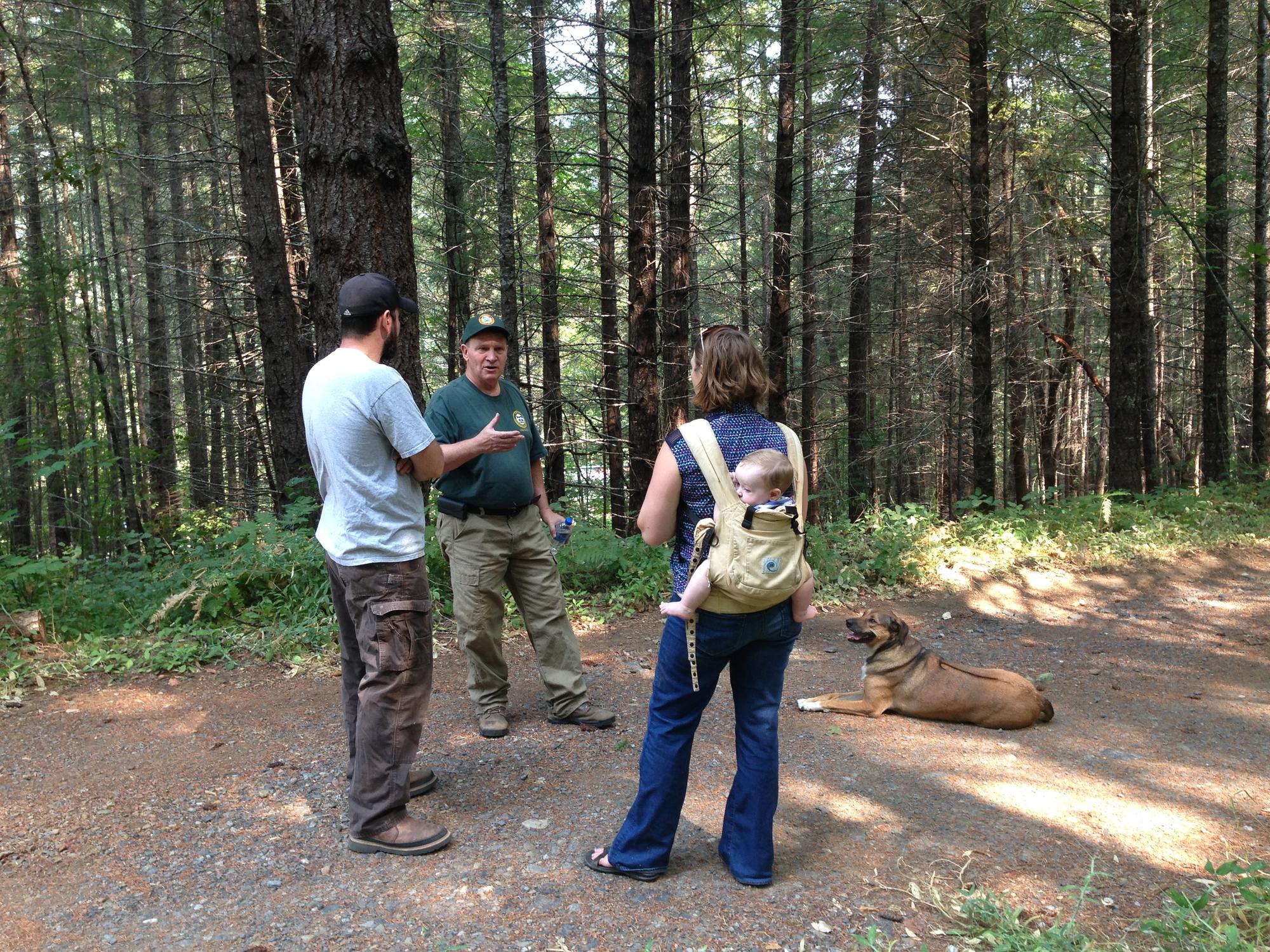A checkerboard landscape in land ownership or management means that the landscape is broken into areas owned or managed by different people or entities. A checkerboard pattern typically exists between public and private lands. However, private-land ownership (such as with industrial and nonindustrial lands) can also result in a checkerboard pattern. Checkerboard ownership can present challenges to wildfire suppression activities, the use of prescribed fire and forest management in general.
Landowners often have diverse management objectives. Private industrial landowners manage their lands for timber production, and public ownership may focus its management objectives on ecosystem services or habitat.
Meanwhile, nonindustrial private landowners may focus on a host of different management objectives — from timber production to managing for aesthetics. Even if neighbors share an interest in wildfire risk management, competing values can make collaboration difficult. As a result, mixed-ownership landscapes often lack coordination in reducing hazardous fuels and have fewer contiguous fuel-reduction treatments.
The degree to which each ownership focuses on wildfire risk management also varies. Nonindustrial private landowners have different levels of knowledge about wildfire risk. Some are keenly aware and others are unaware. The effectiveness of wildfire risk management in mixed-ownership landscapes depends on participation from all ownerships. Misinformed or poorly informed landowners may consider fuel reduction a waste of time, money and effort. For example, landowners may think if they invest in fuel reduction that their neighbors will benefit without incurring any costs. Or, landowners may not understand that some fuel treatments are not as effective unless they are done on a larger landscape level.
The perception that neighbors are not doing their fair share is not limited to private landowners but extends to the perceived lack of management on public lands. Trust between public and private landowners can be further eroded if wildfires on public lands escape to and from the Wildland Urban Interface (WUI), the lands where homes and communities meet the wildlands.
Wildfire is not limited by the boundaries of land ownership. Consequently, a mix of ownerships within a wildfire area poses challenges to suppression. During a wildfire, confusion and inefficiencies can result when multiple agencies are responsible for fire management in an area with complex landscapes and ownerships. Difficulties arise when thoughtful preplanning, clear communication and mutual response agreements are not in place.
What can landowners do to overcome the complexities of managing for fire in a checkerboard landscape? The National Cohesive Wildland Fire Management Strategy facilitates land and fire management efforts across boundaries. The cohesive strategy’s goal is “to safely and effectively extinguish fire when needed; use fire where allowable; manage our natural resources; and, as a nation, live with wildland fire.” Cross-boundary, landscape-scale management creates an economy of scale by combining efforts to sell forest products, contract services and hire labor. Other benefits may include efficient management of invasive plants or insect and disease outbreaks, effective response to wildland fires, and assessing and mitigating risk. On the suppression side, agencies and local firefighting resources have options to coordinate across mixed landscapes as well. Incident Management Teams (IMT) are trained to manage complex incidents and adhere to the National Incident Management System (NIMS) when responding to multi-ownership jurisdictions.
While there are many complexities to managing for fire in a checkerboard landscape, there are also opportunities. Private and public landowners can work together through formal and informal collaborations. Using guidance from the cohesive strategy, public and private landowners can achieve healthy, diverse and resilient forests at the landscape scale, fire-adapted communities, and safe and effective wildfire response.
Resources
Ager, A.A., M.A. Day, C.W. McHugh, K. Short, J. Gilbertson-Day, M. A. Finney, and D. E. Calkin. 2014. Wildfire exposure and fuel management on western US national forests. Journal of Environmental Management, 145: 54–70.
Busby, G. M., H. J. Albers, and C.A. Montgomery. 2012. Wildfire Risk Management in a Landscape with Fragmented Ownership and Spatial Interactions. Land Economics, 88: (3) 496–517.
Busby, G.M. and H. J. Albers. 2010. Wildfire Risk Management on a Landscape with Public and Private Ownership: Who Pays for Protection? Environmental Management, 45: 296–310.
Charnley, S., T. A. Spies, A. M. G. Barros, E. M. White, and K. A. Olsen. 2017. Diversity in forest management to reduce wildfire losses: implications for resilience. Ecology and Society, 22: (1) 22–47.
FEMA. The National Incident Management System. Date accessed, May 16, 2018.
Fischer, A. P. and S. Charnley. 2012. Risk and Cooperation: Managing Hazardous Fuel in Mixed Ownership Landscapes. Environmental Management, 49: 1192–1207
Fischer, A.P., A. Klooster, and L. Cirhigiri. 2019. Cross-boundary Cooperation for Landscape Management: Collective Action and Social Exchange among Individual Private Forest Landowners. Landscape and Urban Planning.
National Cohesive Wildland Fire Management Strategy. Wildfire in the West Blogspot. Date accessed, May 16, 2018.
Nelson, K. C., M.C. Monroe, and J. F. Johnson. 2005. The Look of the Land: Homeowner Landscape Management and Wildfire Preparedness in Minnesota and Florida. Society and Natural Resources, 18: 321–336.
Reams, M. A., T. K. Haines, C. R. Renner, M. W. Wascom, and H. Kingre. 2005. Goals, obstacles and effective strategies of wildfire mitigation programs in the Wildland-Urban Interface. Forest Policy and Economics, 7: 818–826.
USDI and USDA. December 2006. A Collaborative Approach for Reducing Wildland Fire Risks to Communities and the Environment: 10-Year Strategy Implementation Plan, 1–40.



